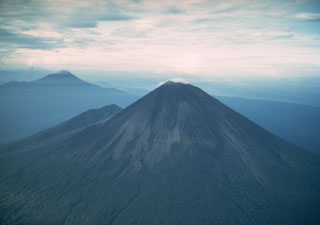Report on Ulawun (Papua New Guinea) — 27 November-3 December 2024
Smithsonian Institution / US Geological Survey
Weekly Volcanic Activity Report, 27 November-3 December 2024
Managing Editor: Sally Sennert.
Please cite this report as:
Global Volcanism Program, 2024. Report on Ulawun (Papua New Guinea) (Sennert, S, ed.). Weekly Volcanic Activity Report, 27 November-3 December 2024. Smithsonian Institution and US Geological Survey.
Ulawun
Papua New Guinea
5.05°S, 151.33°E; summit elev. 2334 m
All times are local (unless otherwise noted)
The Rabaul Volcano Observatory (RVO) reported that seismicity at Ulawun was low during 1-19 November, dominated by very small low-frequency earthquakes occurring at short intervals. Seismicity increased on 19 November and remained elevated during the rest of the month. High-frequency volcano-tectonic earthquakes began to occur at around 1300 on 19 November; the number of those events increased at 1645 and again at 0000 on 20 November. At around 1800 on 20 November low-amplitude non-harmonic volcanic tremor emerged and a slight increase in the amplitude of those signals began a couple of hours later. Seismicity fluctuated at elevated levels until 0900 on 28 November; during brief periods of reduced tremor, distinct, high-frequency, volcano-tectonic events were evident. RVO recommended a declaration of Alert Level Stage 1 (the lowest level of a four-stage scale).
Geological Summary. The symmetrical basaltic-to-andesitic Ulawun stratovolcano is the highest volcano of the Bismarck arc, and one of Papua New Guinea's most frequently active. The volcano, also known as the Father, rises above the N coast of the island of New Britain across a low saddle NE of Bamus volcano, the South Son. The upper 1,000 m is unvegetated. A prominent E-W escarpment on the south may be the result of large-scale slumping. Satellitic cones occupy the NW and E flanks. A steep-walled valley cuts the NW side, and a flank lava-flow complex lies to the south of this valley. Historical eruptions date back to the beginning of the 18th century. Twentieth-century eruptions were mildly explosive until 1967, but after 1970 several larger eruptions produced lava flows and basaltic pyroclastic flows, greatly modifying the summit crater.
Source: Rabaul Volcano Observatory (RVO)

